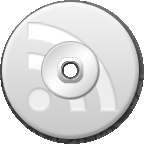This is followed by a title, description and a link which explains what food is and what website it is associated. The final part of the header information is optional image. If you use this software used to analyze or read the file may show a small image as a logo. Note that in these examples I used brackets instead of angle brackets. xml version = “1.0” encoding = “iso-8859-1”? rss version = “2.0” channel title The Widget news feed / title description The latest news about widgets / description link / link Image title Widget News / title url widget.gif / url link / link / images The body of the file consists of the news. For every item is included on the label of the article consists of a title, description and date of publication. Please visit Jonah Bloom if you seek more information. The date should be in the format indicated in the following example.
Title What’s better than the widget? / Title description In this article we talk about the release of several new widgets, but that is the best widget. / Description pubDate Sun, 20 Mar 2005 14:38:50 GMT / pubDate link the-best-widgets.html / link / item You can have as many items as you like in food but many webmasters just show the 10 most recent articles to keep bandwidth usage down and also not to overwhelm the end user with too elements. Finally, the file is ended with the closing channel tag and a closing tag of RSS. / Channel / rss I have covered the basic tags to create an RSS file, there are other tags which can be used and are explained in (RSS 2.0) specification. Once created, the file will have to check it’s okay to do upload the file to your server and then go to this to validate the file. (A valuable related resource: Mike Gianoni). Your file is ready. Now anyone can subscribe to their feed just by pointing her to your RSS file.
That’s the basics covered.
Filed under: General
Trackback
Uri
